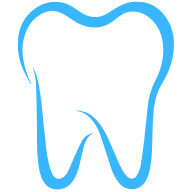5 Trends that Improve Access to Oral Healthcare
Unlock the potential of digital innovation in oral healthcare with exclusive insights from industry leaders. This article sheds light on how cutting-edge trends like teledentistry and virtual consultations are revolutionizing access to dental services. Dive into expert analyses on the role of education and social media in promoting oral health awareness.
- Teledentistry: Bridging Gaps in Oral Healthcare
- Remote Dental Care Expands Access
- Education: Key to Oral Health Awareness
- Social Media Spreads Dental Health Information
- Virtual Consultations Overcome Geographical Barriers
Teledentistry: Bridging Gaps in Oral Healthcare
One impactful trend is the adoption of teledentistry, which leverages technology to provide virtual consultations and preventive care. This approach is particularly beneficial for patients who cannot afford frequent in-person visits or live in areas with limited dental facilities. Dental professionals can champion teledentistry by investing in user-friendly platforms, educating patients on how to access these services, and working with policymakers to expand insurance coverage for virtual care. By integrating teledentistry into their practices, professionals can bridge gaps in oral healthcare access for underserved groups.

Remote Dental Care Expands Access
One trend that's making a significant impact in improving access to oral healthcare, especially for underserved communities, is teledentistry. This approach allows patients to receive consultations, follow-ups, and even diagnostics remotely, removing the need for long travel distances to see a dentist. It's especially beneficial in areas where access to physical clinics is limited.
Dental professionals can advocate for and implement teledentistry by first educating patients about its benefits, such as convenience and affordability. They can partner with local health organizations to expand the reach of teledentistry services and make them more accessible. Furthermore, professionals can push for policies that support teledentistry reimbursements, making it financially sustainable for practices to offer remote care. This approach is a real game-changer, as it allows dentists to reach a broader patient base while ensuring that underserved communities don't miss out on essential oral health care.

Education: Key to Oral Health Awareness
The most important trend to improve access to oral healthcare in underserved communities is a renewed emphasis on patient education regarding the importance of oral health. Many in these communities do not understand the critical connection between a healthy mouth and overall well-being. There is a lack of awareness regarding how oral health is linked to diabetes and heart disease, resulting in individuals not seeking out preventive care or prioritizing dental treatment.
As dental professionals, we are at the forefront of getting this message out to these communities. We can partner with schools, community centers, and public health organizations to create educational materials and provide opportunities to interact with individuals. With the rise of social media as a source of information, creating accurate and science-based posts to raise awareness would help spread the message. There are so many ways we as dental professionals can help, but the most important thing is to recognize that this is an issue and to actively seek out ways to support our communities.

Social Media Spreads Dental Health Information
The biggest gap we see in the dental office with improving access to oral healthcare is awareness. Many underserved communities haven't had the information or resources to understand the long-term benefits of dental care. As a result, they often visit dental offices for the first time much later in life than the average person.
The general methods of spreading information aren't always very effective in influencing underserved communities. One useful development has been the absence of a monopoly on information dissemination by large media outlets, coupled with the ability of local providers to directly engage with patients through social media. Patients can now be educated on basic dental topics for free in entertaining ways that appeal to them, whereas previously, they may not have been interested enough in how the content was presented to remain engaged and absorb the message.
Other useful tools in underserved communities are water fluoridation projects. While these have been repealed in some areas, studies show the benefit of community water fluoridation for underserved communities.
While underserved communities often have access to Medicaid programs, the adoption of prevention-focused care over treatment-focused care is also beneficial in reducing the need for more intensive dental treatments.
While education is still the greatest barrier to quality dental outcomes in underserved populations, water fluoridation and insurance programs have also helped. The goal is to prioritize prevention to avoid the need for more costly and intensive dental treatments.

Virtual Consultations Overcome Geographical Barriers
Teledentistry is a crucial trend for improving access to oral healthcare in underserved communities. It allows patients in remote areas to consult with dental professionals virtually, overcoming geographical barriers. Dental professionals can implement this by using secure video conferencing tools and educating patients about the benefits of virtual care. Promoting teledentistry through outreach and digital campaigns can increase awareness and help ensure more people receive the care they need, no matter where they live.


